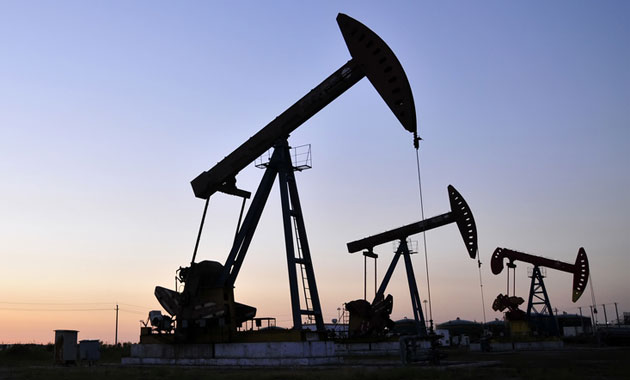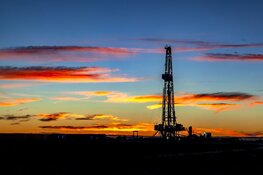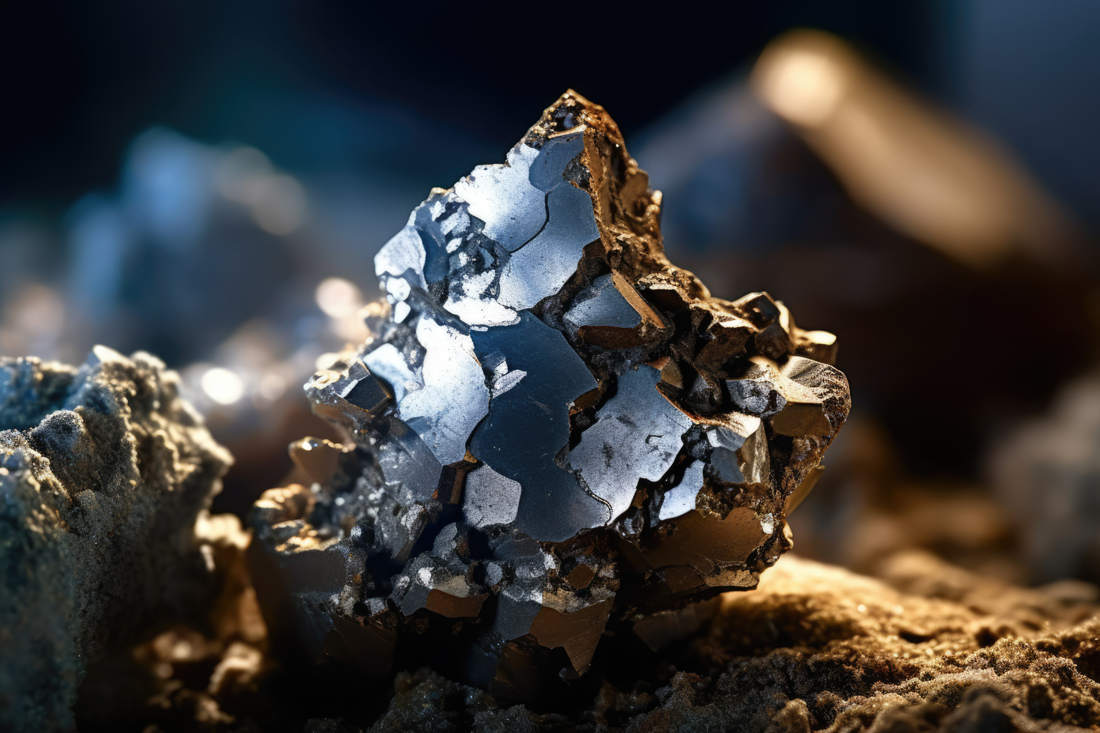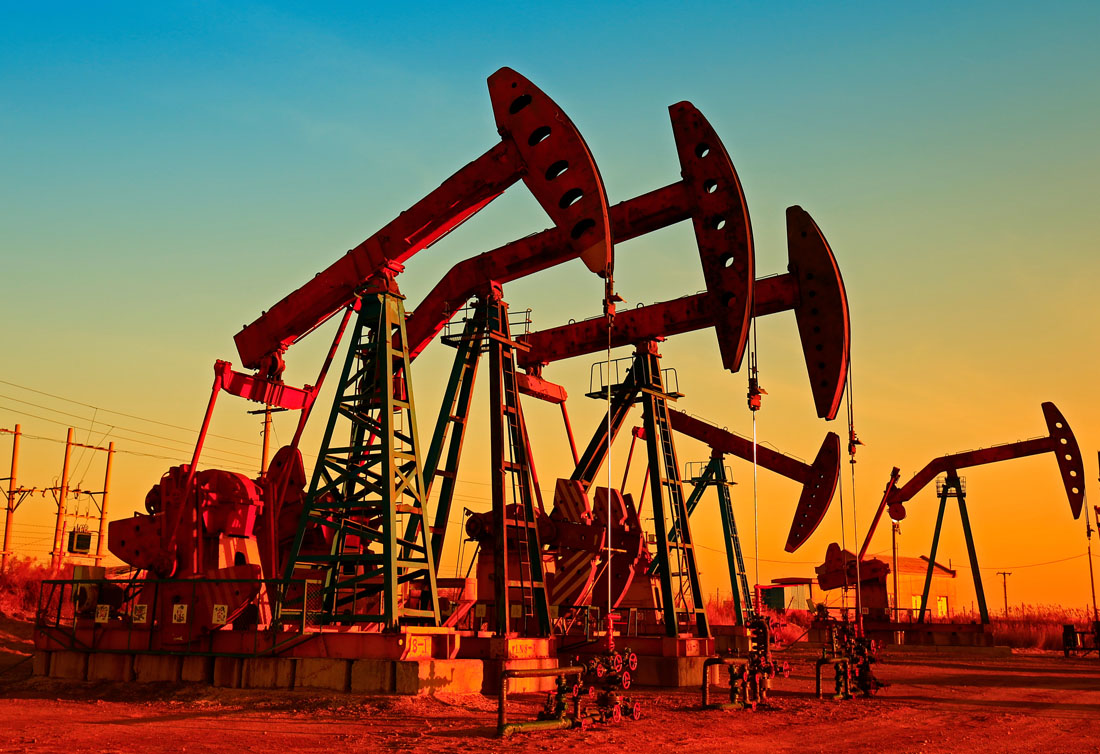Energy resource companies are uniquely different than gold and silver resource companies. With energy companies, you either hit and produce oil and gas or you go out of business. With junior resource companies in the gold and silver space, you never want to try to go into production. After all, that's where you fail. You can never fail as long as you keep drilling.
With gold and silver juniors, they want to drill until their projects resemble Swiss cheese, not produce. After all, you might eventually hit something if investors will keep throwing money at you. All the while, management can continue to collect those fat paychecks and issue themselves more options every time their stock hits a new low.
With energy you either produce or die. And a lot of time you die even if you do produce. They all die for exactly the same reason. Oil and gas prices go up and down faster than the blink of an eye. Oil first hit $118 in May of 1980 only to plunge to a low of $17 by November of 1998 before soaring to $156 in June of 2008 only to tumble to $48 by January of 2009, a mere seven months later. Oil then rocketed higher to a high of $123 in April of 2011 before collapsing to a low of $29 in January of 2016.
There is a small but vocal group of people screeching about how gold was suppressed all the way from $252 in August of 1999 to $1923 in September of 2011 before it made its way gently into a low of $1050 in December of 2015. Compared to the price action in oil, gold looks positively boring.
Gold juniors go out of business because investors eventually get tired of funding their bullshit and cut off their allowance. That's why a gold junior can and often does go down 99% even while gold is only going down 40% in a perfectly normal correction.
Oil juniors and sometimes mid-tier and majors collapse because when oil goes to $156, their costs explode higher so at $156 oil they are in hock up to their ears and it might cost $120 a barrel to produce. At $119 a barrel in a common and regular correction, they shutter their doors and have to go find a real job.
Corrections are a common ordinary feature in any commodity but you will never hear that word used by the PermaBulls. You can either take corrections, even harsh corrections into account, and plan for them or alternatively you are the guy collecting unemployment hoping that McDonalds is still taking applications.
If you are a PermaBull writing about resource markets, you simply whine about manipulation when everyone who has ever traded any market knows that all markets are manipulated all of the time.
I got a call a couple of weeks back about from someone I know in the energy business who needed help getting the story out on oil junior with a teeny-tiny market cap but great expectations.
First of all, my readers need to understand that the energy business is the biggest business in the world bar none with about 90 million barrels a day of oil production. At $42 oil, that's $3.78 billion a day in revenue. A DAY!
Oil is big business. Billion dollar oil companies are literally a dime a dozen. A billion dollar gold company on the other hand is really big. A billion dollar oil company is trivial. And there are hundreds of remora fish swimming around the junior energy space just as there are in the junior metals space all hoping to grow up and become sharks.
Molori Energy Inc. (MOL:TSX.V; MOLOF:OTCQB) had a plan that worked pretty well. The company began in 2006 as Taipan Resources and hobbled along until 2012 when the stock got up to $8.50 on a pre-rollback basis. They promptly blew up and sank into oblivion and pennies per share in 2016 before new management stepped in, rolled back the shares and started running it as if it was a real business.
In late 2016 and early 2017 Molori raised money via a couple of private placements with the intention to go into the oil and gas production business. They inked a deal with Ponderosa Energy in early June calling for Molori to get a 25% interest in certain North Texas panhandle oil fields in a partnership with Ponderosa Energy by giving Ponderosa $1 million and 2 million MOL shares.
Ponderosa took advantage of those highly leveraged oil field operators when the price of oil dipped below $30 in early 2016 and picked up some nice production wells that had been poorly maintained and financed. In June Ponderosa hedged their position in those fields by doing the deal with Molori. Ponderosa owns 75% of the partnership, Molori has the remaining 25%.
Basically what the partnership does is recomplete as many as 400 existing oil wells in 80 leases. They are small wells doing 2-3 barrels a day. It costs the partnership about $20,000 to $25,000 per well to put the well back into production. Each well adds about 2.75 BOEPD flowing production. The current value of a BOEPD is $50,000 to $60,000. So they spend as much as $10,000 per BOEPD to get $50,000 per BOEPD in value. That's a 400% ROI. That's not bad.
And recognizing that if oil can go from $123 to $29 it's also possible to go from $42 to much lower. So they hedge their production forward 18 months. They pay for the work in about six months taking into account they also have operating costs. The profit falls right to the bottom line after that and they are protected against any decline in the price of oil for a year after the well is paid for.
That's pretty slick and Molori and Ponderosa have completed about 100 wells so far taking production from 40 BOEPD in May of 2016 to 400 BOEPD in May of 2017. There are another 250 or so wells planned for recompletion. One drill rig and crew can recomplete 4-5 wells per month adding 10-12 BOEPD per month. The companies plan on using 3-4 rigs at the same time.
All of that is interesting and certainly a 400% ROI sounds wonderful but it's not why MOL is poised to rocket higher.
A neighbor of theirs in the same basin named Adams Affiliates had an interesting theory. The production wells in the region were operating from the Granite Wells and Brown Dolomite oil intervals at a depth of 2,500 feet and more.
There is another oil interval that has been known about for donkey's years named the Red Cave formation at about 1,500 feet. Obviously it's a lot cheaper to drill and complete a 1500-foot well than a 2500-foot well. But operators in the past believed the production from the narrow Red Cave formation wouldn't justify the expense of a well.
That was before fracking. Now, everything I have ever read in the past about fracking was about the exploitation of shale wells, not conventional wells.
Adams believed you could also frack a conventional well to increase flow and production. So they have drilled, fracked and completed over 100 wells into the Red Cave formation with average flow rates initially of about 55 BOEPD. This is where the numbers really get interesting. Given the existing 4,000 acres belonging to the partnership, they believe they can complete as many as 400 wells using 10 acre spacing.
It will cost the partnership about $300,000 to drill, frack, complete and test each well. IF and that's a giant IF, each well comes in about 50 BOEPD will mean it costs the partnership about $6000 to add a flowing barrel that is worth between $50,000 and $60,000 in the region. So we now go up to a 725% to 900% ROI. You don't even want to work the numbers out on 400 wells at 50 BOEPD at $60,000 per flowing BOEPD because the batteries on your calculator will blow up.
Molori plans to spud their first well into the Red Cave Formation around the first week of August. It's a shallow well so completion and a flow rate should be published by the 15th of August.
Anything above 10 BOEPD will be a home run. 40 BOEPD will be a home run with the bases loaded and in the very slight chance of 100 BOEPD, it will be a home run in the 9th inning of the tied-up World Series with the bases loaded.
Molori is cashed up with about $650,000 in the bank. Each well costs them $75,000 for their contribution to the partnership and when flow rates are established the results can be financed for more wells.
Molori Energy is an advertiser. I own shares. Do your own due diligence.
Molori Energy
MOL-V $0.30 (July 19, 2017)
MOLOF OTCBB 30 million shares
Molori Energy website
Bob and Barb Moriarty brought 321gold.com to the Internet almost 16 years ago. They later added 321energy.com to cover oil, natural gas, gasoline, coal, solar, wind and nuclear energy. Both sites feature articles, editorial opinions, pricing figures and updates on current events affecting both sectors. Previously, Moriarty was a Marine F-4B and O-1 pilot with more than 832 missions in Vietnam. He holds 14 international aviation records.
Want to read more Gold Report articles like this? Sign up for our free e-newsletter, and you'll learn when new articles have been published. To see a list of recent articles and interviews with industry analysts and commentators, visit our Streetwise Interviews page.
Disclosure:
1) Bob Moriarty: I, or members of my immediate household or family, own shares of the following companies mentioned in this article: Molori Energy. Molori Energy is an advertiser on 321 Gold/321 Energy. I determined which companies would be included in this article based on my research and understanding of the sector.
2) The following companies mentioned are sponsors of Streetwise Reports: None. Streetwise Reports does not accept stock in exchange for its services. Click here for important disclosures about sponsor fees. The information provided above is for informational purposes only and is not a recommendation to buy or sell any security.
3) Statements and opinions expressed are the opinions of the author and not of Streetwise Reports or its officers. The author is wholly responsible for the validity of the statements. The author was not paid by Streetwise Reports for this article. Streetwise Reports was not paid by the author to publish or syndicate this article.
4) The article does not constitute investment advice. Each reader is encouraged to consult with his or her individual financial professional and any action a reader takes as a result of information presented here is his or her own responsibility. By opening this page, each reader accepts and agrees to Streetwise Reports' terms of use and full legal disclaimer. This article is not a solicitation for investment. Streetwise Reports does not render general or specific investment advice and the information on Streetwise Reports should not be considered a recommendation to buy or sell any security. Streetwise Reports does not endorse or recommend the business, products, services or securities of any company mentioned on Streetwise Reports.
5) From time to time, Streetwise Reports LLC and its directors, officers, employees or members of their families, as well as persons interviewed for articles and interviews on the site, may have a long or short position in securities mentioned. Directors, officers, employees or members of their immediate families are prohibited from making purchases and/or sales of those securities in the open market or otherwise from the time of the interview or the decision to write an article, until one week after the publication of the interview or article.





































